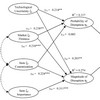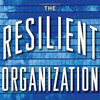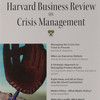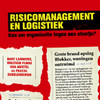 Are you prepared for whatever mishaps your business throws at you? If you’re not, you better start learning Dutch and you will be able to find out how you can better your resilience. Why? Because today’s post is based on a Dutch book I found the other day. Published in 2009, and written by Bart Lammers, Walther Ploos van Amstel and Pascal Eijkelenbergh, Risicomanagement en Logistiek translates as “Risk Management and Logistics” and is a short and succinct handbook that I wish will be translated into English soon. Why? Because this book contains an excellent new framework for logistics resilience and how to achieve it. I’ve done my best in translating the essential parts, but I could still use some help from my Dutch readers.
Are you prepared for whatever mishaps your business throws at you? If you’re not, you better start learning Dutch and you will be able to find out how you can better your resilience. Why? Because today’s post is based on a Dutch book I found the other day. Published in 2009, and written by Bart Lammers, Walther Ploos van Amstel and Pascal Eijkelenbergh, Risicomanagement en Logistiek translates as “Risk Management and Logistics” and is a short and succinct handbook that I wish will be translated into English soon. Why? Because this book contains an excellent new framework for logistics resilience and how to achieve it. I’ve done my best in translating the essential parts, but I could still use some help from my Dutch readers.
What is a Dutch book doing on my blog?
Admittedly, only two percent of the visitors on this blog come from the Netherlands, and Dutch ranks number seven if I count the languages used in the operating systems of the computers of my visitors (after English, German, Chinese, Portuguese, Spanish and French), so promoting this book through this post may seem like a waste of time and effort. Nonetheless, there are a number of reasons why I decided to review this book. First of all, it is a very good book. It is extremely hands-on and practitioner-oriented, with many great examples, most of them from the Netherlands, which brings a new and not often heard of perspective to logistics risk management. Secondly, it is perhaps not so much a book about risk management, but more a book about resilience management, and here the authors develop a – in my humble opinion – brilliant framework for how to improve a company’s resilience. Thirdly, and that is how I came across this book in the first place, they use some of the work from this blog for illustration.
Robustness, flexibility and resilience
I found this book when I was checking Google Scholar for citations of my work. Curious as to what they may have cited, I decided to get a hold of this book, and what they used was a bit surprising, but not really, given the book’s main focus: resilience. In a post back in 2008 I wrote about the difference between robustness, flexibility and resilience, a post that I a year later later enhanced to include flexibility, robustness and resilience and agility and illustrated with a figure the authors apparently found useful:
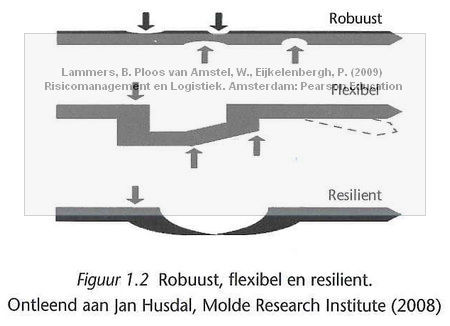
The figure above is taken from the book (page 13) and is clearly marked as coming from my work. Thank you for that. It is nice to see that other authors pick up my work because the find it useful, and the above figure is indeed a very good illustration of the differences between robustness, flexibility and resilience, if I may say so myself.
Resilience Management
The subtitle reads something like “Can your business take a blow?” and that is exactly what the book is trying to answer. What I like about the book is that the authors introduce a new framework for resilience, where a company’s resilience is made up of three components: cognitive resilience, behavioral resilience, and contextual resilience. Cognitive resilience comes from the realization and awareness of one’s own risks. Behavioral resilience stems from transparency, flexibility and abundance. Contextual or perhaps operational resilience is based on supply chain visibility, supply chain (risc) culture and supply chain interaction. While the three resilience terms were easy to translate, I struggled slightly with their individual components, and the result below is thus my personal interpretation (See below for the original figures if you would like to suggest a better translation).
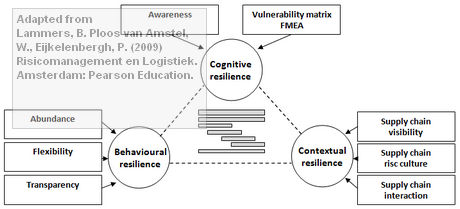
Cognitive resilience is more than just awareness. It is also linked to the ability to analyze and interpret risk and to envision the consequences these risks have, and the vulnerability they result in. Behavioral resilience is linked to the ability to learn from past experiences and the ability to learn and react and improvise in a crisis situation. Contextual resilience is related to the supply chain itself, and is that what integrates and supports behavioral and cognitive resilience.
Behavioral resilience or “gedragsresilience” is based on “overvloed”, “flexibiliteit” and “transparantie”. Flexibility I can understand, transparency less, but abundance? Maybe I don’t know Dutch well enough, but abundance seems a bit out of place here. That said, if I apply Alex Fullick’s thoughts on business continuity, abundance could mean the presence of security. It could also mean, quite simply, that there are enough employees available to deal with the crisis, as a shortage of staff obviously will impact any crisis management. Anyway, I leave it up to my readers to come up with better suggestions.
Logistics Management
Inside the resilience triangle is the company and its logistics, with key elements as shown in the figure below.
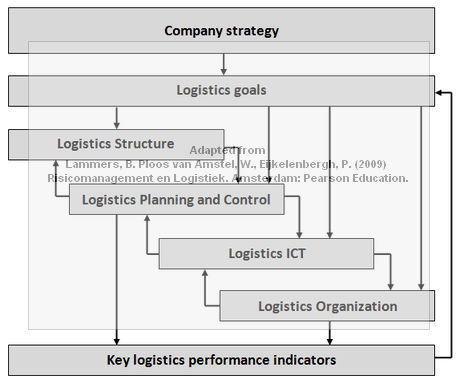
Here, the company’s overall strategies from the basis for the logistics goals, which in turn are reflected in the four key logistic elements structure, control, information and organization. The logistics structure relates to the flows of the supply chain and how these are designed, essentially the structure provides the roadmap for a company’s logistics. Logistics planning and control relates to the supervision of the flow of goods as it was established in the structure. Logistics IT relates to the use of information systems to track the flows, so that deviations and disruptions can be detected and alleviated at the earliest possible opportunity. Organization relates to the humans that populate the supply chain and what decisions they (are empowered to) make when facing a potential crisis.
In essence, uninterrupted logistics depends on resilience, while resilience itself depends on three factors, people (behavioral), mind (cognitive), and the company and its environment (contextual). Hitherto, oversimplified of course, supply chain risk has perhaps focused very much on the latter, acknowledging the the second, but ignoring the first? All three must come together and work in synergy, as Ken Simpson writes, in order to provide resilience.
Conclusion
The book is easy to read and even easier to grasp, and for that alone it deserves to be translated into English. To some degree this book resembles much of the Swedish handbook Säkra företagets flöden or “Securing the company’s flows” as I translated it, written in 1999. While that book looks at business continuity in general, making transportation issues a part of the overall risk picture, this book looks at uninterrupted logistics as the basis for a company’s well-being and existence. Here their view of logistics as an integrative part of business operations is similar to the definition of logistics as a science that the German BVL would like it to have. To me, two things stand out in this book: The resilience framework and the logistics framework. The resilience framework looks at a company’s resilience from a holistic perspective, integrating the human side and the physical side with risk and vulnerability, something I haven’t seen before. The logistics framework is also simple and straightforward, and risk or resilience management in logistics never seemed easier than after reading this book. To bad it is available in Dutch only, but hopefully my Dutch readers will help me in my hopeless translation attempts.
Reference
Lammers, B.; Ploos van Amstel, W.; Eijkelenbergh, P. (2009) Risicomanagement en Logistiek. Amsterdam: Pearson Education.
Author links
- tno.nl: Bart Lammers
- waltherploosvanamstel.nl: Walther Ploos van Amstel
- linkedin.com: Pascal Eijkelenbergh
Buy this book
This online bookstore in Belgium ships this book internationally, and has an English version of their website.
- managementboek.nl: Risicomanagement en Logistiek
Related
- husdal.com: Supply Chain Risk – the forgotten discipline
Do you know Dutch?
In order to review this book, obviously, I must know some Dutch. Otherwise I would be just guessing. Luckily, since I did grow up in Germany, near the Dutch border, I learned some basic Dutch by reading the subtitles on foreign movies on Dutch television. Besides, Dutch is not that far from my two mother tongues German and Norwegian, so I’m pretty much able to make sense of most of what I read in the book, but some subtleties may still escape me, which is why I am inviting my readers to suggest better translations more adapted towards English logistics terminology. As I have already said, it is a great book, and it deserves to be known to a wider audience beyond those who speak Dutch, so for my Dutch-speaking readers, here are the original figures:
Please comment below or contact me directly if you would like to suggest a better translation.




